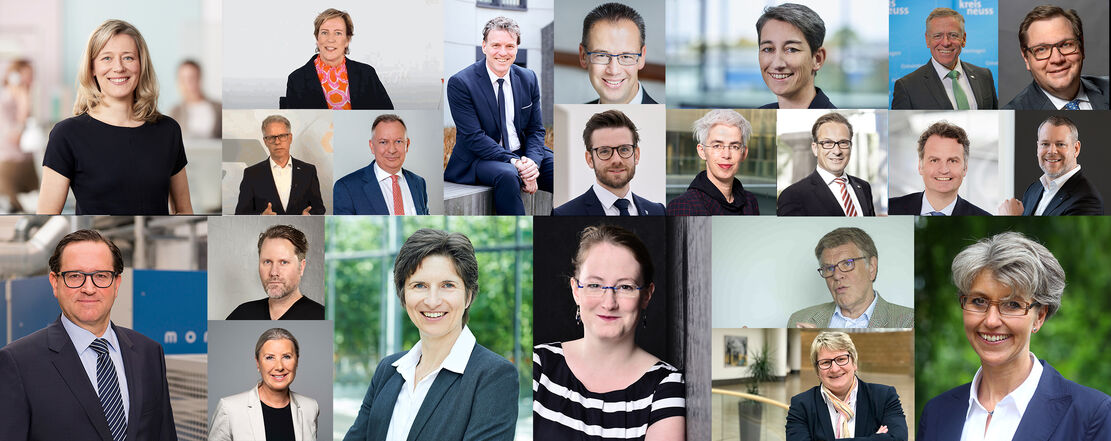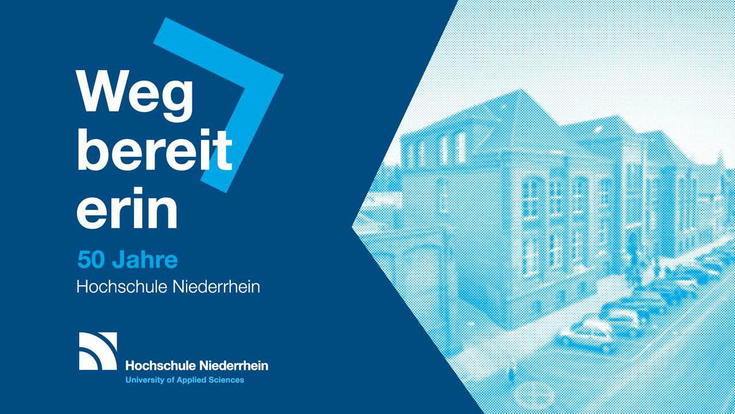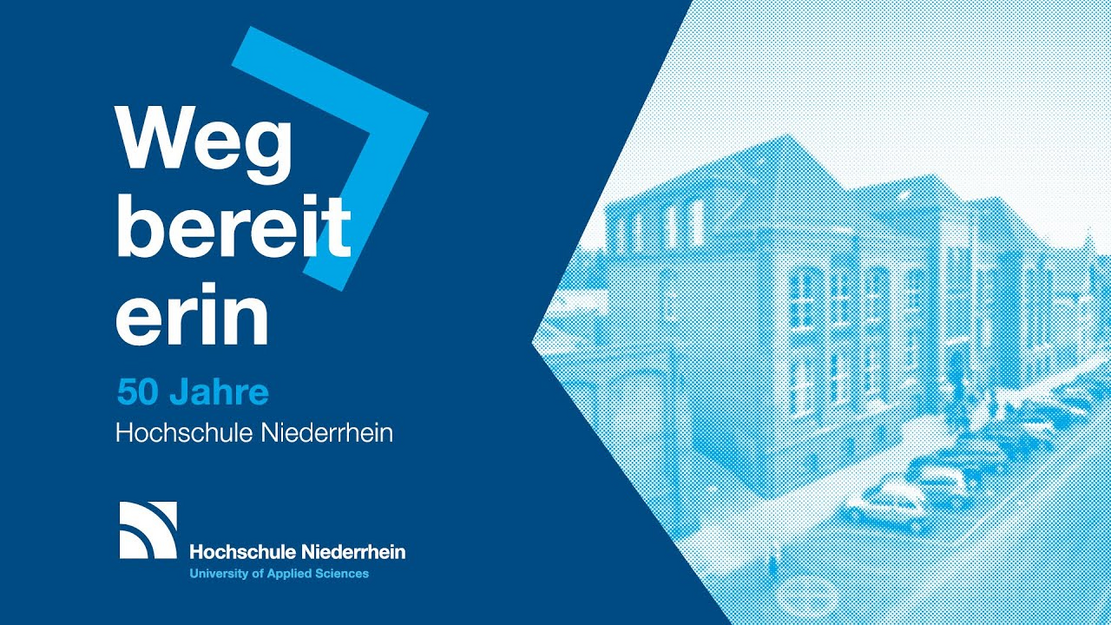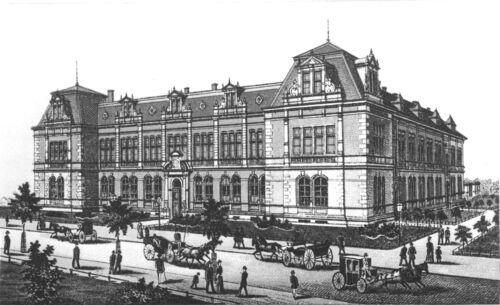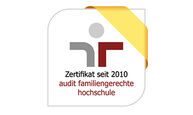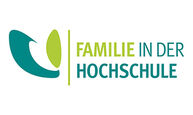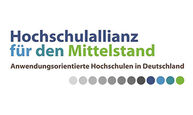The Hochschule Niederrhein will celebrate its 50th birthday in 2021. It looks back on half a century in which it has grown up to become the central hotbed of young talent in the Lower Rhine region. On August 1, 1971, the University of Applied Sciences Niederrhein was founded, at that time with 3660 students. Eight new faculties were created from 13 predecessor institutions. Today, more than 14,200 students study at ten faculties at the Krefeld and Mönchengladbach campuses. They can choose from a wide range of programmes with a total of 90 Bachelor's and Master's degree programmes.
In this anniversary year, however, we are not only referring to the founding year of 1971, because the tradition of application-oriented teaching education and research in Krefeld and Mönchengladbach goes back far into the 19th century. In 1855, the first predecessor institution of the Hochschule Niederrhein was founded with the Crefeld Higher Weaving School. The initiative at that time came from the Crefeld Chamber of Commerce, which demanded a training facility for the next generation of employees for the city's growing silk companies.
For 50 years and even beyond, we have been opening up prospects for young people in the region. In doing so, we combine the interests of the region's companies with our teaching education and research offerings. In a sense, cooperation with local companies is part of the DNA of the Hochschule Niederrhein.
Because the university has always opened up new perspectives over the years, the message in the anniversary year is: Pioneer. 50 years of The Hochschule Niederrhein. I invite you to take a look at this page to see where the Hochschule Niederrhein has been a trailblazer in the past and whether it can also be a trailblazer for you on your own personal path.
Yours sincerely
Dr. Thomas Grünewald
President of The Hochschule Niederrhein





